Overture is a music instrumental introduction to a ballet, opera, or oratorio in the 17th century. During the early Romantic era, composers such as Beethoven and Mendelssohn composed overtures which were independent, self-existing, instrumental, programmatic works that foreshadowed genres such as the symphonic poem. These were "at first undoubtedly intended to be played at the head of a programme".

Louis-Hector Berlioz was a French Romantic composer and conductor. His output includes orchestral works such as the Symphonie fantastique and Harold in Italy, choral pieces including the Requiem and L'Enfance du Christ, his three operas Benvenuto Cellini, Les Troyens and Béatrice et Bénédict, and works of hybrid genres such as the "dramatic symphony" Roméo et Juliette and the "dramatic legend" La Damnation de Faust.
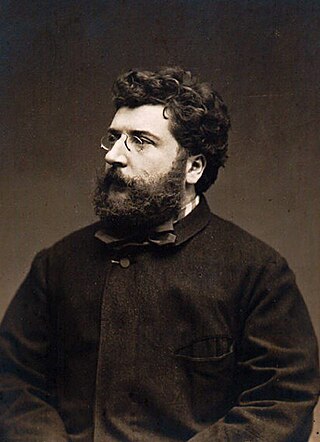
Georges Bizet was a French composer of the Romantic era. Best known for his operas in a career cut short by his early death, Bizet achieved few successes before his final work, Carmen, which has become one of the most popular and frequently performed works in the entire opera repertoire.

Paul Abraham Dukas was a French composer, critic, scholar and teacher. A studious man of retiring personality, he was intensely self-critical, having abandoned and destroyed many of his compositions. His best-known work is the orchestral piece The Sorcerer's Apprentice, the fame of which has eclipsed that of his other surviving works, largely due to its usage in the 1940 Disney film Fantasia. Among these are the opera Ariane et Barbe-bleue, his Symphony in C and Piano Sonata in E-flat minor, the Variations, Interlude and Finale on a Theme by Rameau, and a ballet, La Péri.

Roméo et Juliette is a seven-movement symphonie dramatique for orchestra and three choruses, with vocal solos, by French composer Hector Berlioz. Émile Deschamps wrote its libretto with Shakespeare's play as his base. The work was completed in 1839 and first performed on 24 November of that year, but it was modified before its first publication, in 1847, and modified again for the 2ème Édition of 1857, today's reference. It bears the catalogue numbers Op. 17 and H. 79. Regarded as one of Berlioz's finest achievements, Roméo et Juliette is also among his most original in form and his most comprehensive and detailed to follow a program. The vocal forces are used in the 1st, 5th and 7th movements.

Alceste, Wq. 37, is an opera by Christoph Willibald Gluck from 1767. The libretto was written by Ranieri de' Calzabigi and based on the play Alcestis by Euripides. The premiere took place on 26 December 1767 at the Burgtheater in Vienna.

Benvenuto Cellini is an opera semiseria in four tableaux by Hector Berlioz, his first full-length work for the stage. Premiered at the Académie Royale de Musique on 10 September 1838, it is a setting of a libretto by Léon de Wailly and Henri Auguste Barbier, who invented most of the plot inspired by the memoirs of the Florentine sculptor Benvenuto Cellini. The opera is technically challenging and was until the 21st century rarely performed. But its overture sometimes features in orchestral concerts, as does the concert overture Le carnaval romain which Berlioz composed from material in the opera.

Béatrice et Bénédict is an opéra comique in two acts by French composer Hector Berlioz. Berlioz wrote the French libretto himself, based in general outline on a subplot in Shakespeare's Much Ado About Nothing.

André George(s) Louis Onslow was a French composer of English descent. His wealth, position and personal tastes allowed him to pursue a path unfamiliar to most of his French contemporaries, more similar to that of his contemporary German romantic composers; his music also had a strong following in Germany and in England. His principal output was chamber music, but he also wrote four symphonies and four operas. Onslow was esteemed by critics of his time, but his reputation declined swiftly after his death. It has only been revived in recent years.
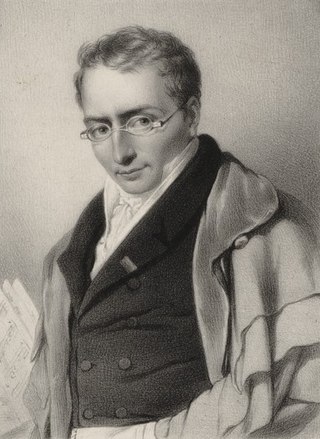
Louis Joseph Ferdinand Herold, better known as Ferdinand Hérold, was a French composer. He was celebrated in his lifetime for his operas, of which he composed more than twenty, but he also wrote ballet music, works for piano and choral pieces. He is best known today for the ballet La Fille mal gardée and the overture to the opera Zampa.

Harold en Italie, symphonie avec un alto principal, as the manuscript describes it, is a four-movement orchestral work by Hector Berlioz, his Opus 16, H. 68, written in 1834. Throughout, the unusual viola part represents the titular protagonist, without casting the form as a concerto. The movements have these titles, alluding to a programme:
- Harold in the mountains
- March of the pilgrims
- Serenade of an Abruzzo mountaineer
- Orgy of bandits
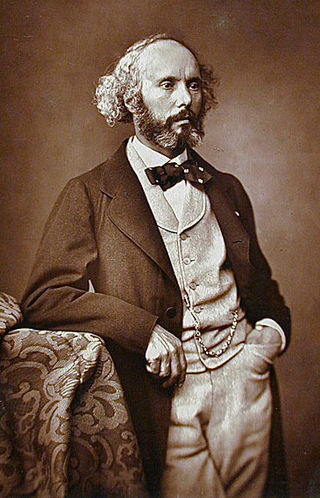
Félicien-César David was a French composer.

Oberon, or The Elf-King's Oath is a 3-act romantic opera with spoken dialogue composed in 1825–26 by Carl Maria von Weber. The only English opera ever set by Weber, the libretto by James Robinson Planché was based on the German poem Oberon by Christoph Martin Wieland, which itself was based on the epic romance Huon de Bordeaux, a French medieval tale. It was premiered in London on 12 April 1826.
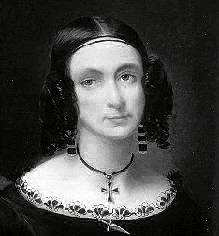
Louise-Angélique Bertin was a French composer and poet.
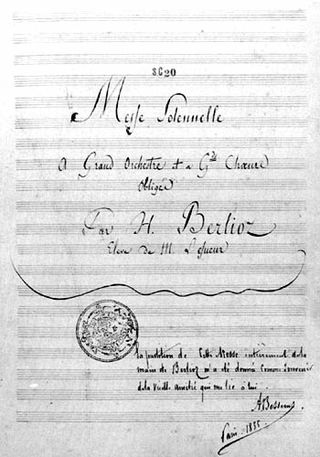
Messe solennelle is a setting of the Catholic missa solemnis by the French composer Hector Berlioz. It was written in 1824, when the composer was twenty, and first performed at the Saint-Roch, Paris, on 10 July 1825, and again at the Saint-Eustache in 1827. After this, Berlioz claimed to have destroyed the entire score, except for the Resurrexit, but in 1991 a Belgian schoolteacher, Frans Moors, came across a copy of the work in an organ gallery in Antwerp, and it has since been revived.

French composer Hector Berlioz wrote a number of "overtures", many of which have become popular concert works. They include true overtures, intended to introduce operas, but also independent concert overtures that are in effect the first orchestral tone poems.

Ludwig Wenzel Lachnith was a Bohemian horn player and versatile composer influenced by Joseph Haydn and Ignaz Pleyel. Today he is chiefly remembered because of his adaptations of operas by Wolfgang Amadeus Mozart. The French composer and writer Hector Berlioz immortalized him in a diatribe in his autobiography.
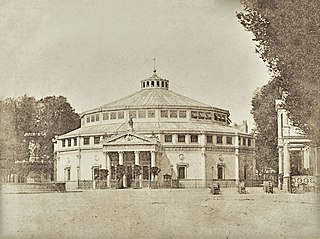
The Cirque d'Été, a former Parisian equestrian theatre, was built in 1841 to designs by the architect Jacques Hittorff. It was used as the summer home of the Théâtre Franconi, the equestrian troupe of the Cirque Olympique, the license for which had been sold in 1836 to Louis Dejean by Adolphe Franconi, the grandson of its founder, Antonio Franconi. The cirque was later also used for other purposes, including grand concerts conducted by Hector Berlioz.
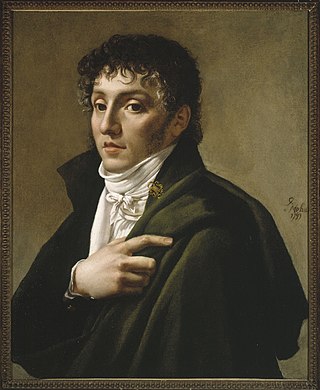
Le jeune Henri is an opera by the French composer Étienne Méhul. It takes the form of a comédie mêlée de musique in two acts. The libretto, by Jean-Nicolas Bouilly, is based on an episode from the life of King Henri IV of France. It was first performed on 1 May 1797 at the Théâtre Favart, Paris. The opera was a failure but the overture was warmly applauded and has often been performed separately since. Known as La chasse du jeune Henri, it is a piece of programme music describing the course of a hunt from dawn to the killing of the stag.



















